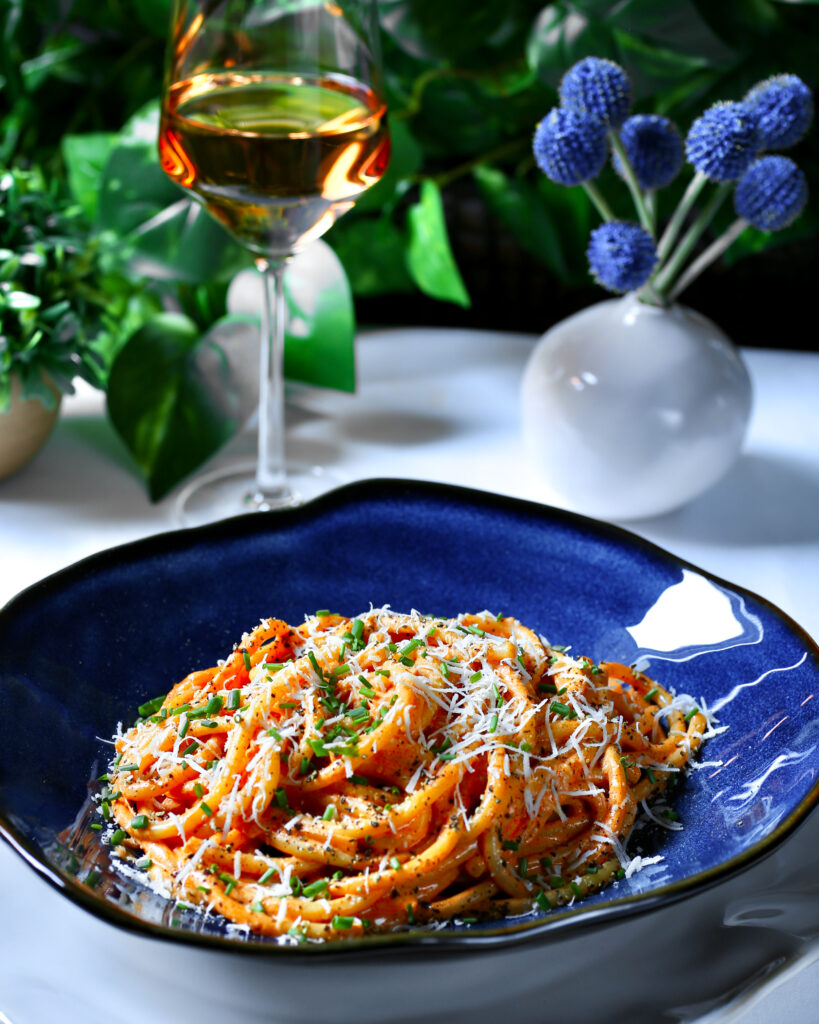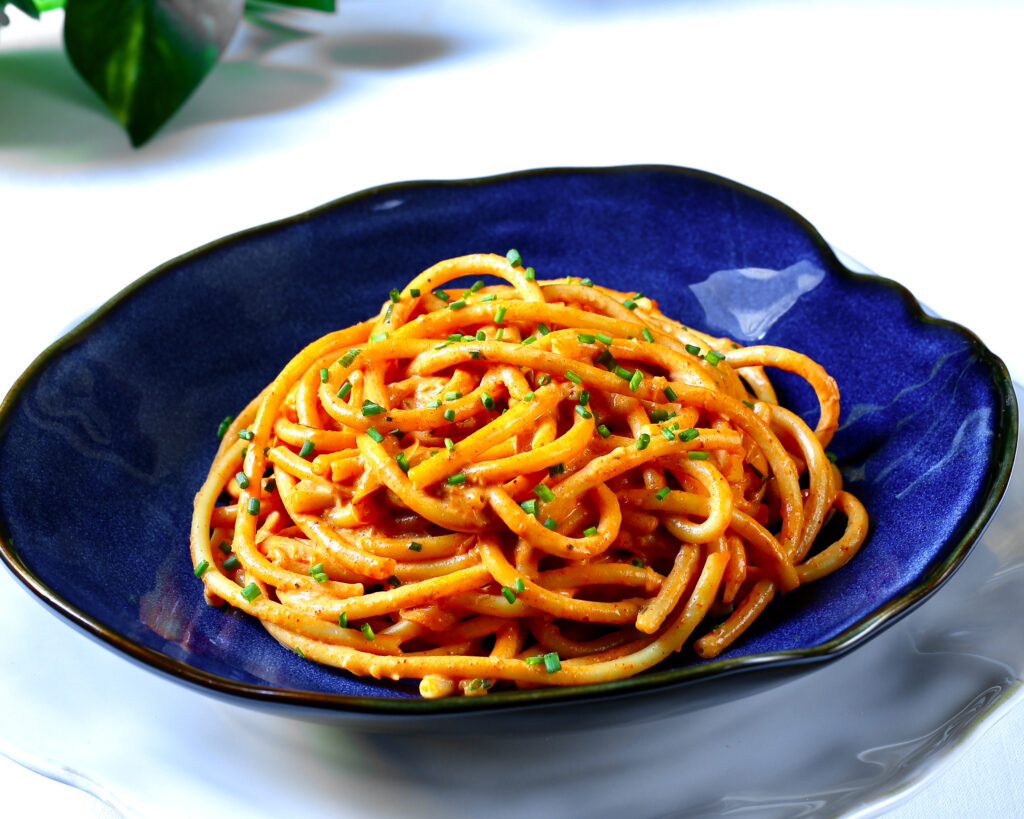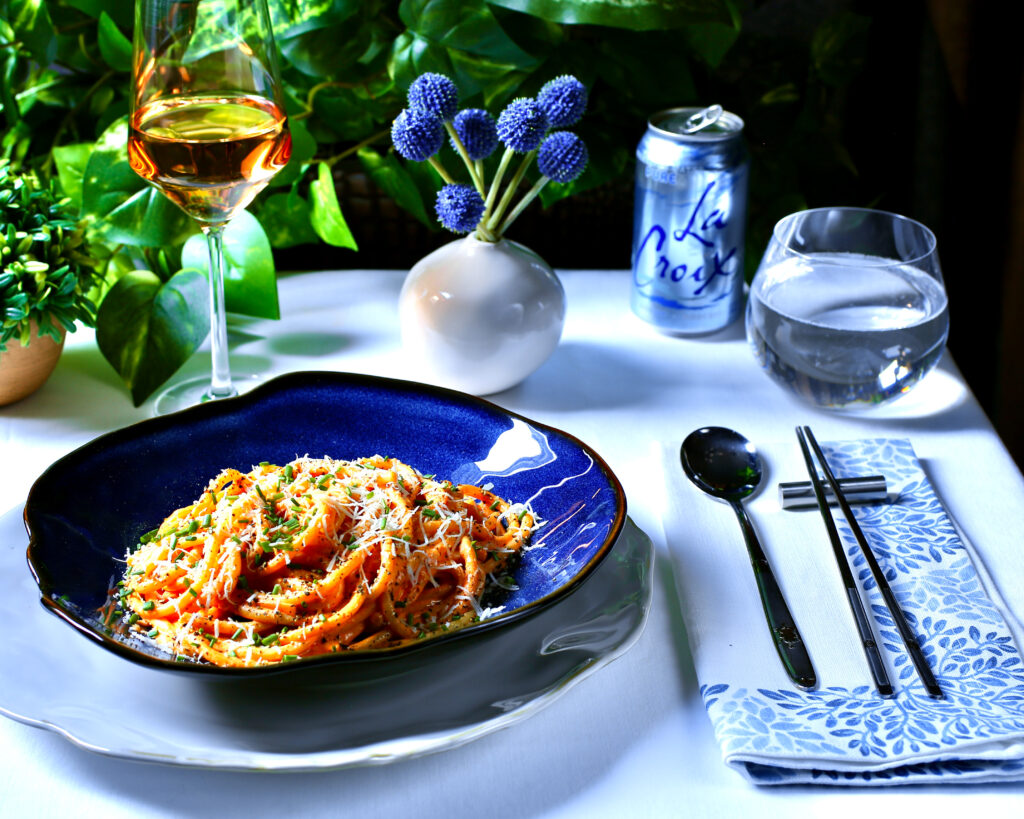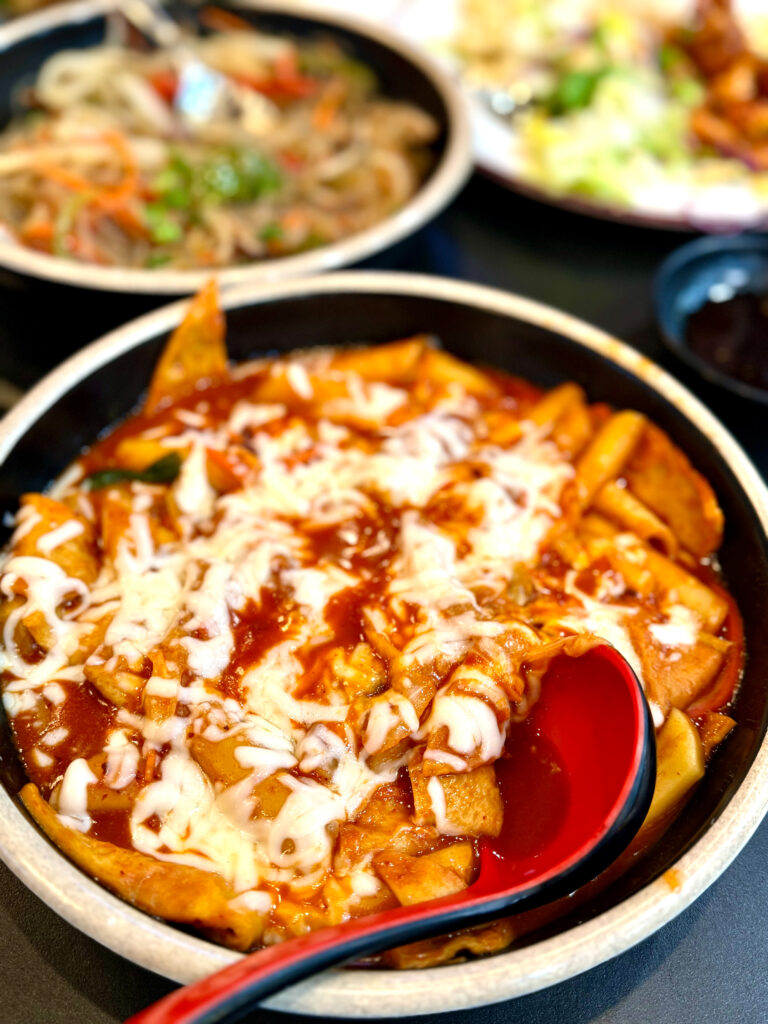
Creamy Gochujang Noodles
In the mid-2000s, Korean street food vendors took cues from the Italian pasta dish penne alla vodka by introducing heavy cream into their traditional tteokbokki.
Tteokbokki is a popular stir-fried rice cake snack that is simmered in a spicy-sweet gochujang sauce. Gochujang is a Korean red chili paste with sweet heat and a fermented umami richness. The addition of cream results in a distinctive rosy color, hence the moniker “rosé tteokbokki.”
My previous Korean-French fusion salmon dish, a Creamy Gochujang Braised Salmon, blended those same spicy and creamy elements. This Korean-Italian fusion noodle dish also wows with a delicious fruitiness, slight smokiness and depth of flavor from the sun-dried Korean red peppers in the paste.
Bucatini stands in as an interesting alternative for rice cakes because of its wonderfully chewy quality. Handmade bronze dies give the pasta a fabulous coarse, sauce-absorbing surface, perfect for soaking up all those spicy-sweet-creamy-umami flavors that rosé tteokbokki is famous for…

Creamy Gochujang Noodles Recipe
Ingredients
- 8 oz. bronze-cut bucatini
- 1 1/2 T. olive oil
- 1/2 white onion, finely chopped
- 3 garlic cloves, minced
- 2 1/2 T. gochujang
- 1 T. soy sauce or low-sodium tamari
- 1 t. gochugaru
- 1/4 c. heavy cream
- 3/4 c. sour cream
- sea salt to taste
Method
Cook bucatini in boiling salted water al dente. Do not overcook. Reserve a cup of pasta water, then drain.
Meanwhile, heat olive oil in a non-stick skillet over medium heat. Add onion and sauté until soft. Then add garlic and cook one more minute. Next add gochujang, soy sauce, and gochugaru and cook another minute, stirring constantly.
Lower the heat then add cream. Stir to combine then stir in the sour cream. Simmer until the sauce is hot then remove from heat. Taste for salt.
Add the hot drained bucatini to the skillet and toss to coat with the sauce. Add hot pasta water to loosen as needed.
To Plate
- chives, finely chopped
- pecorino romano, fresh grated
- fresh ground black pepper
Use tongs to place noodles in bowls. Finish with chives, cheese, and pepper.

Notes
Serve with rosé, of course.
The recipe is easily doubled for a full box (1 lb.) of bucatini.
OK to sub half-and-half for heavy cream.
Garnish with chives or scallions (rather than basil or parsley for example) as a nod to the original classic tteokbokki typically cooked with scallion pieces.
Gochugaru, also made from sun-dried red peppers, is a ground chili powder. Together with gochujang, it gives this pasta its distinctive Korean spiciness. Many ttteokbokki recipes only use gochujang, but gochugaru adds another spicy dimension.
Tteokbokki with Cheese

This is a classic tteokbokki with scallions and thin sheets of fish cake. The cheese is a modern addition. We enjoyed this dish at Dynamite Korean Street Food in Las Vegas.
About Bronze-Cut Noodles
The term “bronze cut” refers to the molds or dies through which the pasta dough is extruded or pushed to give it a specific shape. These dies are made of bronze, a metal alloy, and they play a crucial role in shaping the pasta. The use of bronze dies in pasta-making is considered traditional and is often associated with higher quality in terms of texture and ability to hold sauce.
When pasta dough is forced through bronze dies, it creates a slightly rough surface on the noodles. This texture allows the pasta to better absorb sauces, enhancing the overall dining experience. Additionally, the traditional method of bronze cutting is believed by some to give the pasta a more artisanal and authentic quality.
In contrast, industrial pasta production often uses Teflon or other non-stick materials for dies, which can result in a smoother surface on the pasta. While this may be more cost-effective for mass production, some argue that it lacks the desirable texture and sauce-adherence properties associated with bronze-cut noodles.
MORE GOCHUJANG DISHES
Sundubu Jjigae ~ Korean Soft Tofu Stew
BBQ Oysters – Gochujang Butter, Kimchi, Scallion
Gochujang Chicken Adobo and Chef Hooni Kim
Griddled Gochujang Chicken Sandwich, Kimchi Slaw, Seaweed Mayo
Korean Grilled Salmon, Gochujang-Soju Marinade
Korean Soy-Braised Black Cod (Eun Daegu Jorim)
Creamy Gochujang Braised Salmon

One thought on “Creamy Gochujang Noodles”